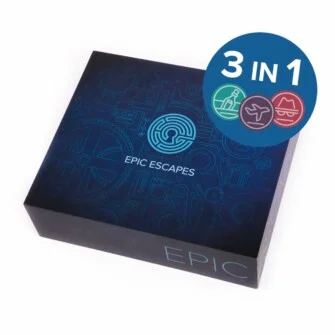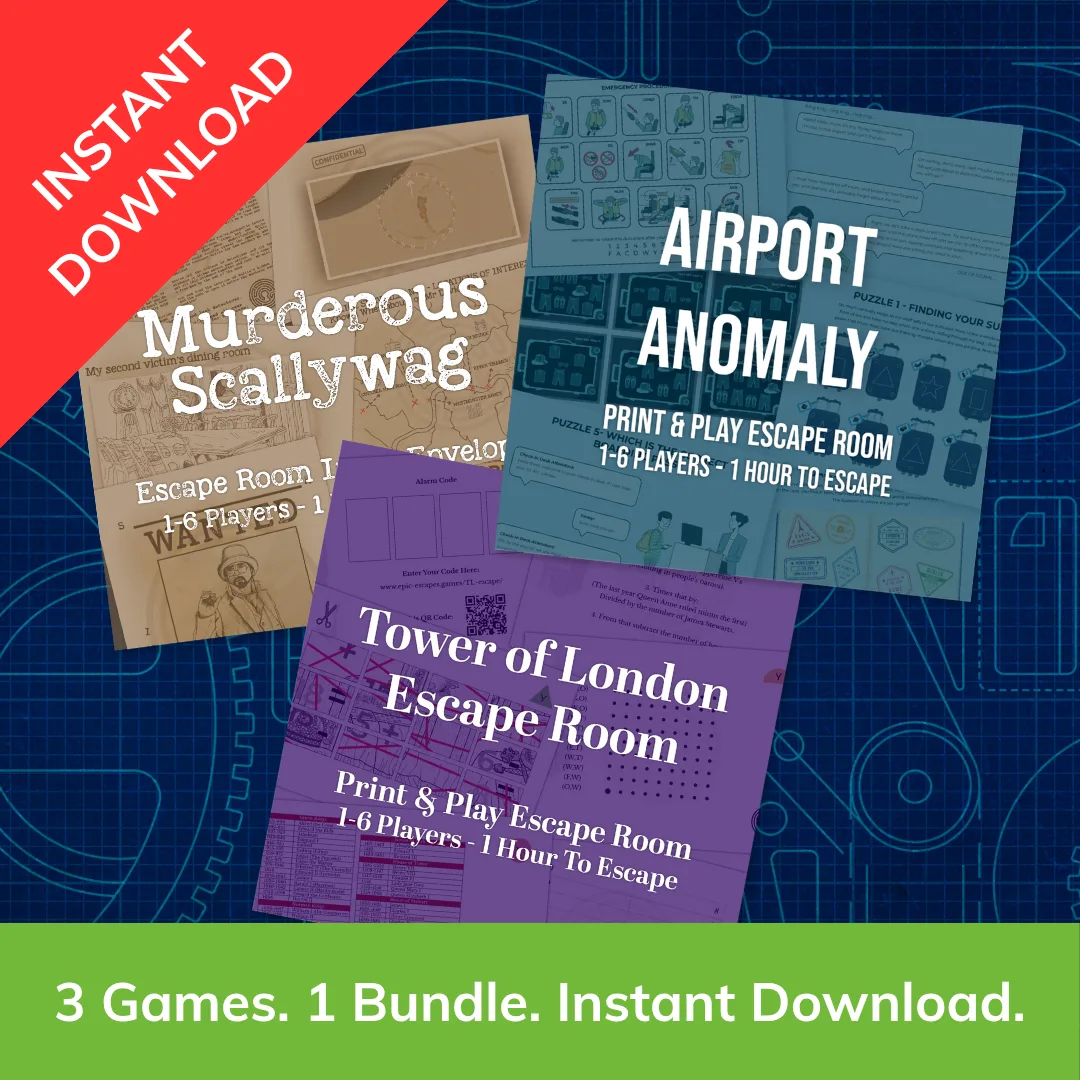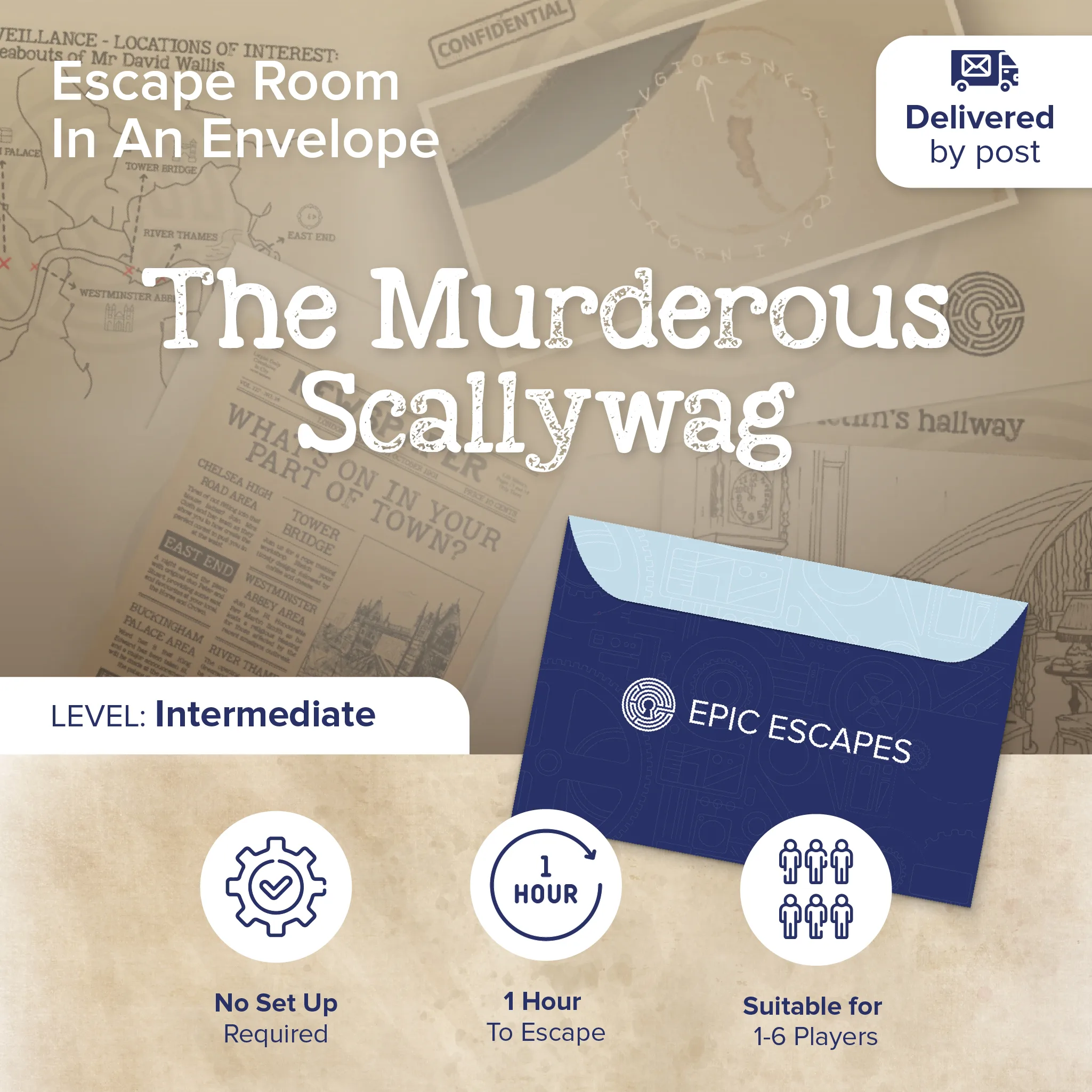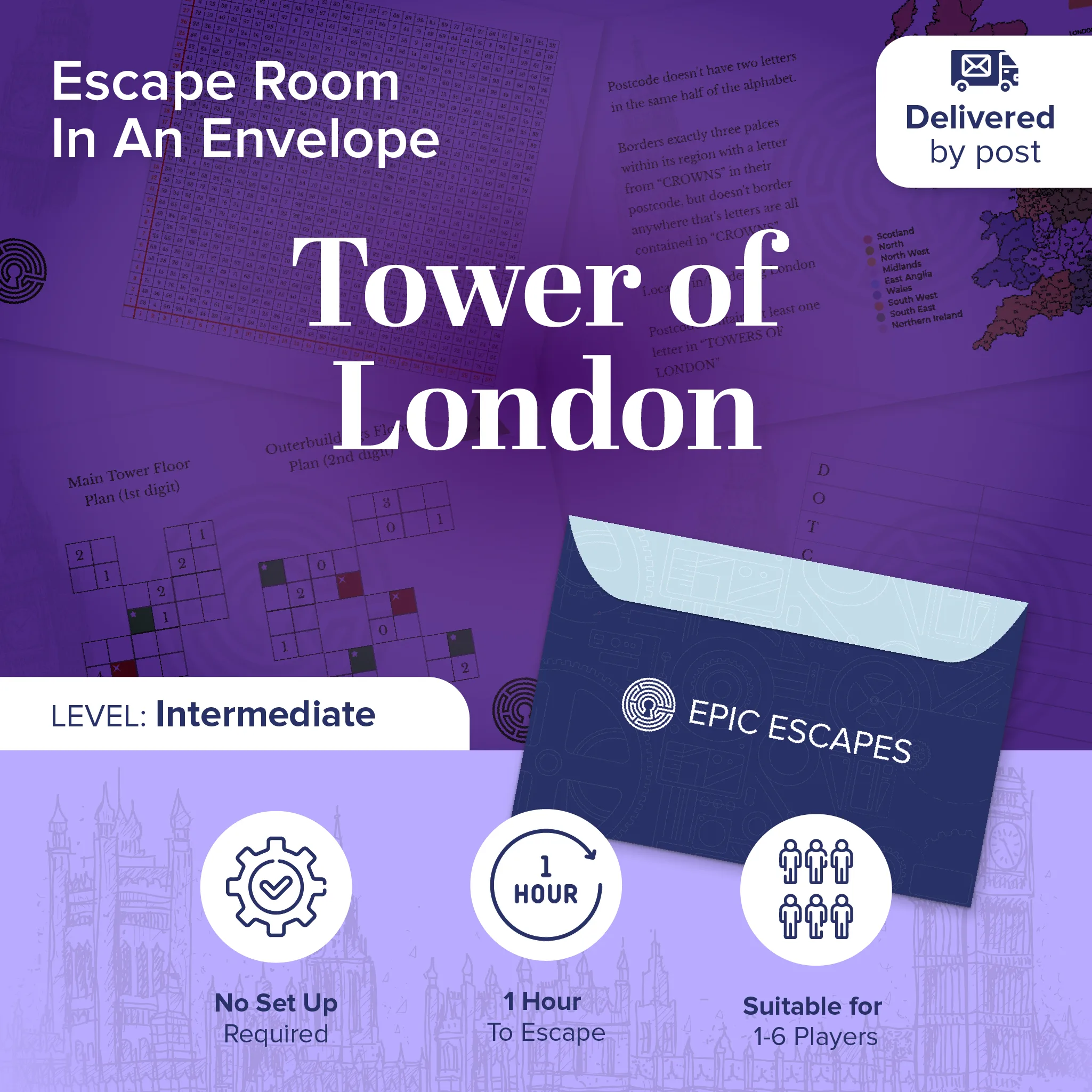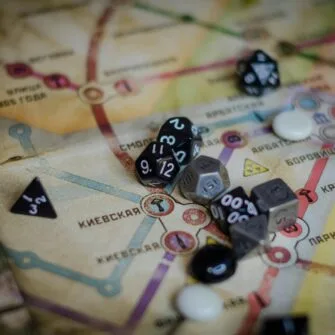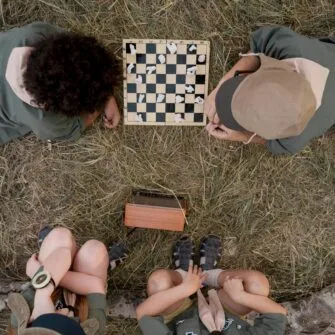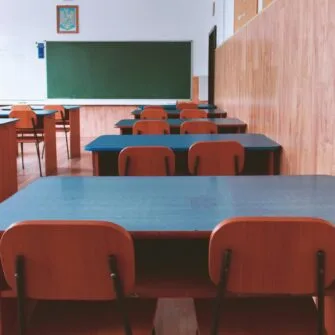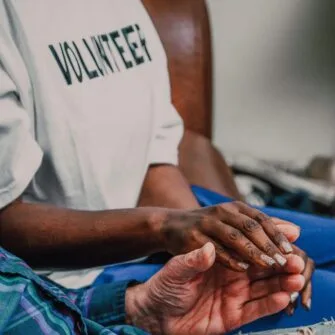Ever wondered how to bring the thrill of an escape room into your own home? Picture this: the lights are dim, a cryptic message flickers on the screen, and your friends huddle around a peculiar-looking box with intricate locks. The clock is ticking, and the room is filled with a buzz of excitement and mystery. This is the magic of a DIY escape room, where your creativity and ingenuity transform a familiar space into a labyrinth of puzzles and clues.
For escape room enthusiasts and keen gamers, creating an at-home escape room is like embarking on a quest in your favourite video game—only this time, you’re the game master, crafting every twist and turn. This guide is your treasure map, providing you with all the tips and tricks to design an unforgettable escape room experience right in your living room.
Table of Contents
Planning Your Escape Room
Planning an escape room is akin to writing a gripping novel—each element must work together to draw players into the story and challenge their wits. Let’s dive into the first chapter of your DIY escape room journey: planning.
Choosing a Theme
Imagine stepping into a world where you’re a detective hot on the trail of a notorious jewel thief, or perhaps an archaeologist uncovering ancient secrets in a forgotten temple. The theme is the heart of your escape room, setting the tone and guiding the narrative. Consider what excites you and your players the most. Do they relish solving crimes, exploring haunted mansions, or embarking on space adventures? Choose a theme that sparks imagination and curiosity.
Crafting a Storyline
Once you have a theme, it’s time to weave a story that will captivate your players from start to finish. Think of your storyline as the backbone of your escape room—it should be intriguing, coherent, and immersive. For instance, if your theme is a heist, your story might involve players breaking into a vault to retrieve a stolen artifact before the authorities arrive. Every puzzle and clue should tie back to this narrative, creating a seamless and engaging experience.
To craft a compelling story, consider these elements:
- Introduction: How will you introduce the scenario to your players? A mysterious letter, a video message, or a journal entry can set the scene.
- Objective: What is the ultimate goal? Be clear about what players need to achieve to “escape” or complete the mission.
- Plot Twists: Keep things interesting with unexpected developments or revelations that players must navigate.
Setting Objectives and Puzzles
Designing puzzles is where your creativity truly shines. Puzzles should be challenging but fair, requiring players to think critically and work together. Start by outlining key objectives that align with your storyline. If players are solving a mystery, their objectives might include finding hidden evidence, deciphering codes, and unlocking secret compartments.
When creating puzzles, mix it up to keep things fresh and engaging:
- Logic Puzzles: Riddles, ciphers, and pattern recognition tasks that require deductive reasoning.
- Physical Puzzles: Tasks that involve manipulating objects, such as assembling a jigsaw puzzle or navigating a maze.
- Combination Puzzles: Puzzles that require players to gather information from various sources to find the solution.
Questions to Consider
- “What kind of experience do you want your participants to have?” Reflect on the emotions and reactions you want to evoke—excitement, tension, curiosity?
- “How can you ensure the puzzles are balanced in difficulty?” Test your puzzles with a small group to gauge their complexity and adjust as needed.
Examples
Consider the tale of Emma, a passionate escape room enthusiast who transformed her basement into a thrilling spy mission. Emma chose a Cold War theme, crafting a storyline where players were secret agents tasked with preventing a nuclear crisis. She used household items to create intricate puzzles, like decoding messages hidden in vintage books and assembling clues from newspaper clippings. Emma’s escape room was a hit, leaving her friends eager for the next adventure.
By thoughtfully planning your escape room’s theme, storyline, and puzzles, you set the stage for an immersive and unforgettable experience. Ready to gather your materials and bring your vision to life? Let’s continue on this creative journey.
Gathering Materials and Tools
Imagine you’re a master chef preparing a gourmet meal—every ingredient must be carefully chosen and expertly combined to create a culinary masterpiece. Similarly, gathering the right materials and tools is crucial for building your DIY escape room. Here’s how to ensure you have everything you need to make your vision a reality.
Basic Supplies
First, let’s assemble the essentials. Think of these items as your basic pantry staples, necessary for almost any recipe you’ll concoct. Some key supplies include:
- Locks and Keys: Padlocks, combination locks, and keyed locks are fundamental for many puzzles.
- Boxes and Containers: Secure containers for hiding clues or prizes.
- Paper and Writing Materials: For creating written clues, maps, and other documents.
- Tape and Adhesives: To affix clues and create hidden compartments.
Most of these items can be found around your home or purchased inexpensively from local stores or online. Be resourceful and creative—an old shoebox can become a treasure chest, and a piece of string can become a tripwire for a booby trap.
Crafting Unique Props
Unique props add a layer of authenticity and immersion to your escape room. Consider the following ideas:
- Handmade Artifacts: Use clay, papier-mâché, or even Lego bricks to create custom items that fit your theme.
- Printed Materials: Design and print vintage letters, secret codes, or ancient scrolls using online templates and aging techniques (like tea-staining paper).
- DIY Gadgets: Simple electronics like LED lights, buzzers, or magnets can add an interactive element. For example, a puzzle requiring players to complete an electric circuit to unlock a door.
Tech Integration
Incorporating technology can elevate your escape room, making it feel like stepping into the future. Here’s how:
- QR Codes: Create and place QR codes around the room that link to clues or video messages.
- Smartphone Apps: Use apps designed for escape rooms to manage time, provide hints, or enhance puzzles.
- Voice Assistants: Utilize devices like Amazon Echo or Google Home to deliver clues or narrate parts of the story.
Questions to Consider
- “What items do you already have that can be repurposed for your escape room?” Look around your home for potential props and supplies before purchasing new items.
- “How can technology enhance your escape room without overcomplicating it?” Balance tech integration with accessibility to ensure all players can participate fully.
Examples
Take the example of Alex, a tech-savvy gamer who transformed his apartment into a futuristic escape room. Alex used QR codes to hide clues, leading players through a series of high-tech puzzles involving laser pointers and magnetic locks. He even programmed his smart home system to dim the lights and play eerie music, immersing his friends in a thrilling cyberpunk adventure.
Setting Up Your Space
Now that you’ve gathered your materials, it’s time to transform your home into an immersive escape room. Think of it as staging a theatrical production—every detail contributes to the overall atmosphere and experience.
Room Layout
Start by choosing a room or series of rooms that will serve as your escape space. Consider the following tips for layout and design:
- Flow and Accessibility: Arrange furniture and props to create a logical flow and ensure players can move around comfortably.
- Hidden Areas: Utilize nooks, crannies, and concealed spaces to hide clues and surprises.
- Themed Decor: Decorate the room to match your theme. For a medieval adventure, drape fabric to resemble castle walls and use wooden furniture to enhance the ambiance.
Lighting and Sound
Lighting and sound play a crucial role in setting the mood. Here’s how to use them effectively:
- Lighting: Dim the lights for a mysterious atmosphere, or use coloured bulbs to evoke different settings. For a haunted house theme, flickering candles or fairy lights can create a spooky effect.
- Sound: Use background music or ambient sounds to immerse players. A jungle adventure might feature animal sounds and rustling leaves, while a spy mission could include suspenseful music and radio static.
Safety Considerations
While creating an engaging environment, it’s important to ensure safety:
- Clear Pathways: Make sure all pathways are clear and free from tripping hazards.
- Emergency Exits: Ensure there’s a quick and easy way for players to exit in case of an emergency. Inform players of the exit route before starting the game.
- Non-Toxic Materials: Use non-toxic materials for props and avoid anything that could cause harm.
Questions to Consider
- “How can you use lighting to set the mood?” Experiment with different lighting setups to see what best enhances your theme.
- “What are the key safety features you need to keep in mind?” Always prioritize the safety and comfort of your participants.
Examples
Consider Sarah’s approach to her pirate-themed escape room. She transformed her living room with nautical decorations, hanging fishnetting and placing treasure chests around the room. She used blue LED lights to create an underwater effect and played ocean sounds in the background. Despite the immersive setup, she made sure all props were safe and easy to handle, ensuring a fun and secure experience for her friends.
By meticulously planning your layout, lighting, and safety measures, you can create an escape room environment that is both captivating and secure. Now that your space is ready, it’s time to bring your game to life.
Running the Game
With your escape room meticulously planned and set up, it’s time to guide your participants through the experience. Running the game effectively ensures that everyone has a fantastic time while staying immersed in the story.
Briefing Participants
Before the adventure begins, set the stage with a captivating introduction:
- Scenario Introduction: Share the backstory and the objective of the escape room. This can be done through a dramatic reading, a pre-recorded video, or even an in-character performance. For instance, if your theme is a haunted house, you might start with a spooky tale about the house’s history and the mystery that needs to be solved.
- Rules and Guidelines: Clearly explain the rules, such as not using excessive force on objects and the importance of respecting the game space. Inform players about the hints system and any safety precautions.
Game Master Role
As the game master, you are both the storyteller and the overseer:
- Facilitator: Keep an eye on the progress and be ready to step in if players get stuck or if there’s a need to clarify a rule. Your role is to ensure the game flows smoothly and remains engaging.
- Hint Giver: Be prepared to offer hints in a way that fits the narrative. For example, if players are lost in an ancient temple, hints could be delivered as cryptic messages from a “guardian spirit.”
Handling Hints and Clues
Striking the right balance with hints is crucial:
- Strategic Hints: Provide hints that nudge players in the right direction without giving away the solution. This keeps the game challenging and rewarding.
- Timed Hints: Consider offering hints at predetermined intervals if players haven’t made progress. This can help keep the momentum without frustrating the participants.
- Interactive Clues: Use walkie-talkies, secret notes, or in-character interruptions to deliver hints, adding to the immersive experience.
Questions to Consider
- “How can you make sure everyone understands the rules?” Consider a brief Q&A session before starting.
- “What’s the best way to manage hints?” Decide whether you’ll use a formal hint system or a more dynamic approach based on the participants’ progress.
Examples
Look at how James, a seasoned escape room aficionado, runs his DIY escape room. For his detective-themed game, he starts with a dramatic reading of a case file, setting the scene for his friends. Throughout the game, James stays in character as a chief inspector, providing hints through a vintage-looking radio. This not only helps the players but also keeps the narrative consistent and engaging.
Post-Game Review
The adventure doesn’t end when the last puzzle is solved. Reflecting on the experience is an essential part of the process, allowing you to gather feedback and celebrate the achievement.
Feedback Collection
Collecting feedback helps improve future games:
- Post-Game Discussion: After the game, hold a debriefing session where players can share their thoughts. Ask questions like, “What was your favourite part?” and “Which puzzle did you find most challenging?”
- Feedback Forms: Provide short feedback forms for players to fill out, focusing on different aspects of the game such as difficulty, enjoyment, and immersion.
Improvement Tips
Use the feedback to refine your escape room:
- Puzzle Adjustments: Identify puzzles that were too difficult or too easy and tweak them accordingly. Perhaps a riddle needs clearer wording, or a physical task requires more precise clues.
- Narrative Enhancements: Consider any suggestions for improving the storyline or theme. Adding more background details or enhancing the atmosphere can make a significant difference.
Celebrating Success
End on a high note by celebrating the players’ success:
- Themed Awards: Create fun awards that tie into the theme of the escape room. For a pirate adventure, you might hand out “Treasure Hunter” certificates.
- Photo Opportunities: Set up a themed backdrop where players can take victory photos. This not only adds to the fun but also provides great content for social media sharing.
- Themed Snacks: Offer refreshments that match the theme of your escape room. For instance, medieval-themed snacks could include “dragon” cupcakes or “knight” cookies.
Questions to Consider
- “What went well and what could be improved?” Reflect on both the players’ feedback and your observations as the game master.
- “How can you make the next escape room even better?” Continuously seek ways to enhance the experience, from storyline depth to puzzle variety.
Examples
Consider Emma’s approach to post-game reviews for her ancient Egypt-themed escape room. After the game, she gathered her friends around a table adorned with themed snacks like pyramid-shaped sandwiches. She led a discussion on what they enjoyed most and what could be improved. Emma also handed out “Archaeologist of the Year” certificates, creating a memorable end to the adventure and valuable insights for her next escape room.
By effectively running the game and conducting a thorough post-game review, you ensure that the experience is not only enjoyable but also continually improving. Ready to take your DIY escape room to the next level? Let’s explore how to keep your audience engaged and excited.
Conclusion: Wrapping Up Your DIY Escape Room Adventure
Creating a DIY escape room is an exciting journey that blends creativity, problem-solving, and a touch of theatrical flair. As you transform your home into a world of mystery and adventure, you’ll find that the process is just as rewarding as the game itself. Let’s recap the essential steps to ensure your escape room is a smashing success.
First, the planning phase sets the foundation. Choose a compelling theme and craft a storyline that will captivate your players. Think of your escape room as a live-action story where every detail, from the puzzles to the decor, contributes to the immersive experience.
Next, gather your materials and tools. Be resourceful, repurposing household items and integrating technology to enhance your puzzles. Unique props and interactive gadgets can add an extra layer of excitement, making your escape room stand out.
Setting up your space is like staging a theatrical production. Pay attention to the room layout, lighting, and sound to create an atmosphere that matches your theme. Always prioritize safety, ensuring that the game space is secure and comfortable for all participants.
Running the game involves guiding your players through the experience while maintaining the narrative. As the game master, your role is to facilitate, provide hints when necessary, and keep the energy high. The post-game review is just as important, offering a chance to gather feedback, celebrate the success, and refine your setup for future adventures.
By following these steps, you’ll create a DIY escape room that’s not only fun but also memorable. Whether you’re hosting a birthday party, a team-building event, or just a casual get-together with friends, your at-home escape room will provide a unique and thrilling experience.
So, what are you waiting for? Dive into the world of DIY escape rooms and let your imagination run wild. We can’t wait to hear about your creative setups and the unforgettable adventures you’ll create. Share your stories and tips with us, and let’s continue to inspire each other in this exciting community of escape room enthusiasts and gamers.
Ready to start your DIY escape room journey? The clock is ticking—let the adventure begin!

